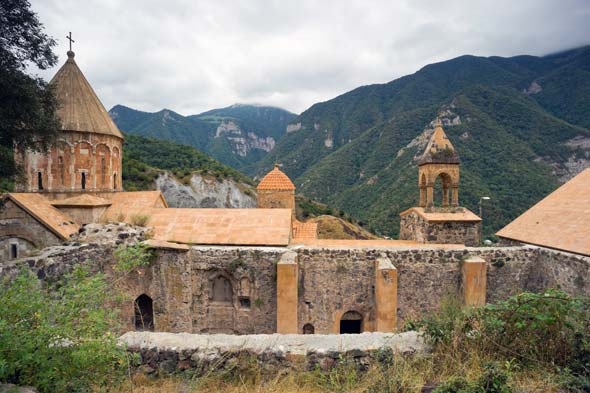An opening reception will be held November 15 in the John Sloan Dickey Center for International Understanding for an exhibit that features photographs of Nagorno-Karabakh, a region that has remained a source of conflict between Armenia and Azerbaijan since the fall of the Soviet Union.

The Russo Gallery, located on the first floor of the Haldeman Center, will feature the work of College Photographer Eli Burakian ’00, showcasing his photographs of Nagorno-Karabakh, a self-proclaimed autonomous region whose borders lie within Azerbaijan, but which is primarily populated by ethnic Armenians.
“Eli’s photographs are doubly inspiring,” says Christianne Wohlforth, acting director of the Dickey Center. “On the one hand they are beautiful images, while on the other they are a record of time spent abroad and the power of the visual to enhance understanding.”
Since the conflict in the late 1980s and early ’90s, the region has remained one of the lingering stalemates since the dissolution of the Soviet Union. There have been negotiations between the two sides over the years, but none have yielded a permanent peace treaty. There is a ceasefire in place, but it has been violated in recent years.
Though Nagorno-Karabakh leadership has pushed for international recognition, the region remains unrecognized as an independent state by the United States and the vast majority of other countries. Burakian’s photographs illustrate the region’s rugged mountainous landscapes, its weathered buildings and churches, and the residents who have lived through years of conflict.

“Very few people in the United States know much about Nagorno-Karabakh,” says Burakian. “We hope this exhibition and presentation will inform people about this unique region and the conflict that continues to affect everybody there. We also hope that from our presentation we will get folks to question what truly makes a nation: Is it the people and the land, or is it foreign recognition?”
The photographs in the show are from a trip that Burakian and his wife, Julia Burakian ’01, took in 2011. Julia, who is of Armenian descent, lived and taught in Armenia and Nagorno-Karabakh with support from a Dickey Center Lombard Fellowship from 2002 to 2004. The couple continue to visit the region and photograph the landscape and people there.
“We hope to inspire students to follow their interests and take advantage of the amazing resources here at Dartmouth,” Eli Burakian says, “and to think creatively about raising funding for projects of their own.”
The Burakians will deliver a presentation and slideshow at 5 p.m. on November 15 in Haldeman 041, which will be followed by a reception at 6 p.m. in the Russo Gallery. Refreshments and traditional Armenian food will be served at the reception. The show will continue through the end of the year.

